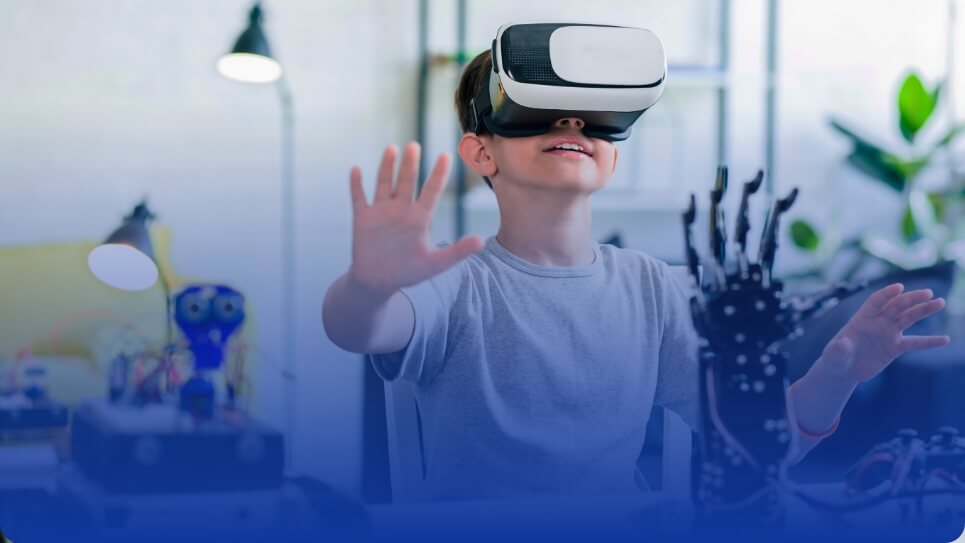Enterprise 5G Benefits
IOT & Connectivity
Software Engineering
Enterprise Verticals
Blogs
Nurturing Future-Ready Minds


Level up the learning experience with 5G and instil students with a tech-savvy approach to problem-solving.
Make an inventory of tasks and determine what data to be collected to take out many of these tasks using AI.
Note:
AI – Artificial Intelligence
ML – Machine Learning
MV – Machine Vision
SME – Subject Matter Expert
P&ID - Piping and Instruments Diagram
GHG - Greenhouse Gas
IT - Information Technology
OPAF - Open Process Automation Forum
OT - Operational Technology
0123456789
Looking at various types of data (results; environment; personal; etc.) and determine how XR (VR/AR) can improve the student experience.
Note:
AI – Artificial Intelligence
ML – Machine Learning
MV – Machine Vision
SME – Subject Matter Expert
P&ID - Piping and Instruments Diagram
GHG - Greenhouse Gas
IT - Information Technology
OPAF - Open Process Automation Forum
OT - Operational Technology
0123456789
Using 5G and AI against data collected to predict early issues that could potentially lead to students dropping out.
Note:
AI – Artificial Intelligence
ML – Machine Learning
MV – Machine Vision
SME – Subject Matter Expert
P&ID - Piping and Instruments Diagram
GHG - Greenhouse Gas
IT - Information Technology
OPAF - Open Process Automation Forum
OT - Operational Technology
0123456789
Autonomous robots and aerial drones can traverse harsh and dangerous environments and reduce hazard risks for human workers. Such technology will provide enhanced monitoring and safety upkeep for facilities. They can be fitted with various sensors geared towards the purpose they are meant for and by using 5G, we can deploy them in real-time whereby the data collected can be sent directly to an AI application for investigation and immediate further action.
Wearable technology allows security and medical personnel to conduct background and health checks efficiently. Of course, they have a much broader focus and can be used in many different industries where clothing has been enriched with wearable technologies. Wearables are also able to collect extra information for a 5G-enabled digital service.
Sensors are crucial for capturing real-time data and insights and pave the way for more informed decision-making. Sensors will be the data collection point for every 5G-enabled digital service and therefore will have to cover a broad spectrum of types of information to be collected and the way they are connected to the DNB 5G network.
XR is set to take work and play to the next level with cutting edge technology never seen before. These devices have the potential to boost productivity and enhance entertainment, changing the way we experience our reality through digital transformation. There is an increasing broad spectrum of devices available for both consumer and enterprise markets, making it increasingly important for each user experience.
All information provided on potential 5G-enabled solutions and potential vendors is provided for information purposes only and based on our awareness of the available 5G-enabled solutions and potential vendors in the market. It does not constitute endorsement, recommendation or favouring by DNB. It is your responsibility to verify and evaluate such 5G-enabled solutions and potential vendors. DNB is not an agent or legal representative of any of such 5G-enabled solutions and potential vendors, is not associated or endorsed by such potential vendors, has no authority to act on behalf of any such potential vendors, and will be an independent party if you enter a business relationship with such potential vendors. Third party links included are for convenience only and are not under DNB’s control. DNB does not assume any responsibility or liability for your use of such third-party links.